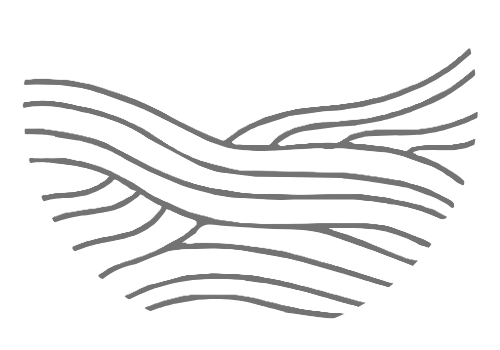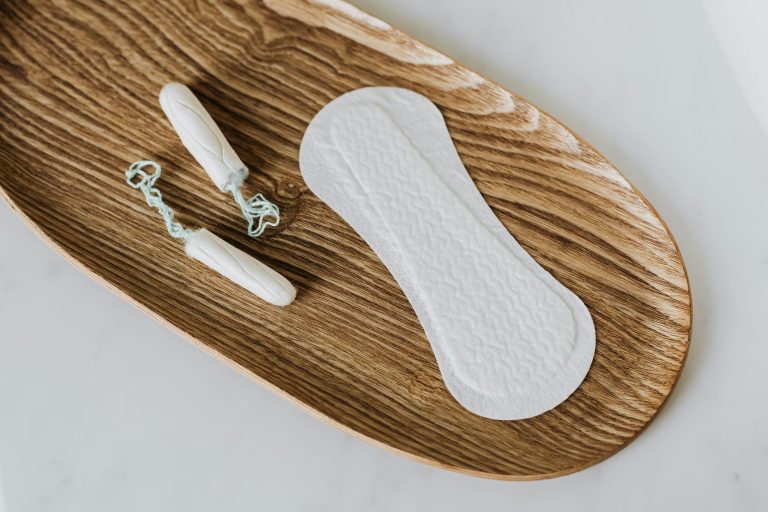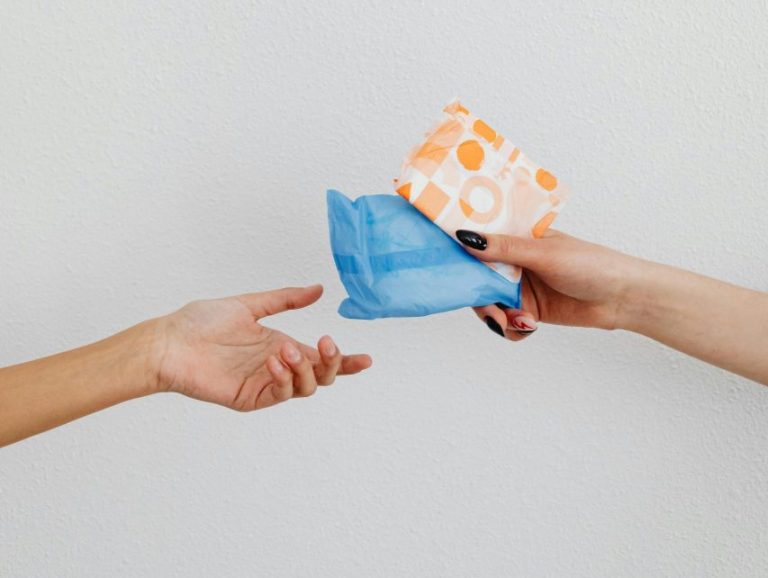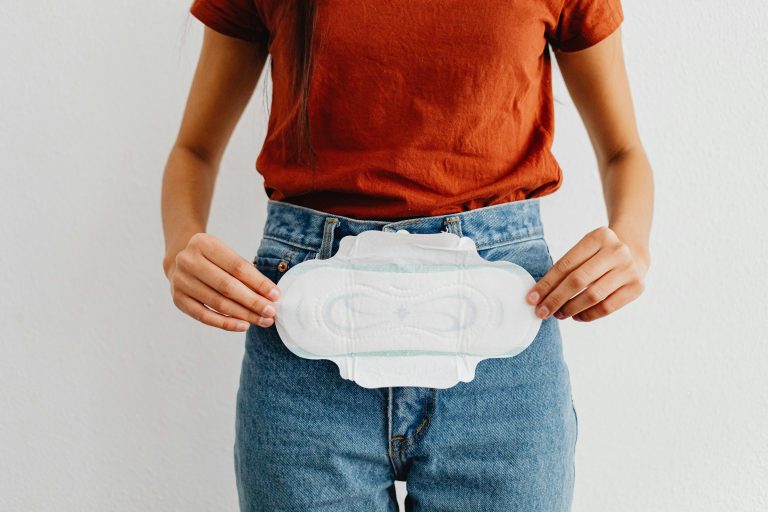Did you know that 76% of girls report their schools teach them more about the biology of frogs than about their own bodies? As a mom who remembers the confusion and uncertainty of my first period, this statistic from Girlology hits close to home. I still vividly recall that day in 7th-grade math class when everything changed, and I had no idea what to do next. That’s exactly why I’m passionate about helping other parents navigate this important milestone with their daughters – because I know firsthand how much difference the right support can make.
Whether you’re here because you’ve noticed early signs of puberty or you’re proactively preparing for what’s ahead, you’re in the right place. Let’s walk through everything you need to know about your daughter’s first period symptoms, with practical advice that I wish someone had shared with me back then.
Recognizing Early Signs of Your Daughter’s First Period
Like many people, I used to think that getting my period would be the first sign of puberty. That’s a common misconception! The reality is that several physical changes typically show up long before that first period arrives, and understanding these signs can help parents better prepare their daughters for what’s ahead.
The first real sign of puberty might surprise many parents – it’s actually rapid growth in feet and hands! During my own puberty journey, I outgrew all my favorite shoes in what felt like no time, not realizing this was actually my body’s first hint at the changes ahead. After that initial growth spurt, breast development typically begins between ages 8-12, with breast buds being one of the most reliable early indicators that menstruation might start within the next year or two.
One thing that often catches parents off guard is the appearance of vaginal discharge, which can start up to a year before the first period. When I first experienced this change as a preteen, I felt scared and confused because no one had warned me about it. This perfectly illustrates why early conversations about body changes are so crucial – knowledge truly is power when it comes to puberty.
The body follows a predictable sequence of changes, even though the timing varies for each girl. From the first breast buds to the first period typically takes about 1.5 to 3 years. During this time, parents might notice their daughter experiencing:
- A noticeable growth spurt
- The development of body odor
- The appearance of pubic hair
- Changes in skin texture, possibly including some acne
- Widening of the hips
Common First Period Symptoms and What They Mean
Let’s talk about what actually happens when that first period arrives. I’ll never forget sitting in math class, feeling completely unprepared and overwhelmed. Looking back, I realize how much easier it would have been if I’d known what to expect.
First periods are usually lighter than what your daughter will experience in the future, but they can still come with some physical symptoms. The most common ones include:
- Mild cramping in the lower abdomen
- Lower back discomfort
- Slight fatigue
- Breast tenderness
- Light bleeding that might be brown or dark red
What I wish I’d known back then is that these symptoms are completely normal and usually manageable with simple remedies. A heating pad1 became my best friend once I discovered its soothing powers! It’s also worth noting that first periods are often irregular – mine certainly were. It took several months before any kind of pattern emerged, which is perfectly normal.
Creating a Supportive Environment for Period Conversations
The hardest part about getting my first period wasn’t actually the physical experience – it was feeling like I couldn’t talk to anyone about it. That’s why I’m so passionate about helping parents create an open, supportive environment for these crucial conversations. Trust me, your daughter needs this dialogue more than you might realize.
Starting these conversations early makes a world of difference. Research shows that girls who feel prepared for their periods experience less anxiety and better body confidence. I remember sitting through that one awkward health class in fifth grade, but what I really needed was an ongoing dialogue with someone I trusted. It’s not about having one “big talk” – it’s about creating a continuing conversation that evolves as your daughter grows.
Here’s what I’ve learned about making these conversations feel natural and comfortable: Start with the basics long before puberty hits. Use correct anatomical terms from the beginning – this isn’t just about comfort, it’s about safety too. Studies show that children who know the proper names for their body parts are actually less vulnerable to abuse, as they have the language to communicate effectively about their bodies.
When it comes to timing, watch for her cues. Is she asking questions about her changing body? Has she mentioned friends getting their periods? These are perfect opportunities to open up the conversation. But don’t wait for her to bring it up – sometimes she might be too embarrassed to ask. I remember having so many questions but feeling too shy to voice them.
Essential First Period Care and Management Strategies
Let’s get practical about preparing for that first period. I’ll never forget frantically wadding up toilet paper in that middle school bathroom because I wasn’t prepared. Your daughter doesn’t have to go through that! Together, you can create a first period kit that gives her confidence and peace of mind.
A well-stocked period kit should include:
- A variety of pads in different absorbencies (start with regular/medium flow)
- A small wet bag or plastic baggie for storing used products
- A clean pair of underwear
- Portable hand soap (never hand sanitizer – it can be irritating)
- Pain relief medication if you choose
- Dark-colored shorts or leggings as backup
Beyond the practical supplies, let’s talk about teaching proper hygiene practices. This isn’t just about changing pads regularly (though that’s important!) – it’s about overall self-care during menstruation. Show her how to track her cycle using an app or calendar. Explain the importance of washing hands before and after changing menstrual products. These might seem like obvious things, but remember – everything about this experience is new to her.
When to Consult a Healthcare Provider
Sometimes it’s hard to know what’s “normal” and what isn’t when it comes to first periods. Let me share some clear guidelines about when to seek medical advice, because I wish I’d had these back when I was dealing with my own uncertainty.
Pay attention if your daughter experiences:
- Extremely heavy bleeding (soaking through a pad every 1-2 hours)
- Severe cramps that don’t improve with over-the-counter pain relief
- Periods that last longer than 7 days
- Periods that come more frequently than every 21 days
- No period by age 15, or no period within 3 years of breast development
- Significant mood changes that interfere with daily life
Remember, while some discomfort during periods is normal, severe pain isn’t something your daughter should have to “tough out.” I spent too many years thinking intense cramping was just part of being a woman before learning that wasn’t necessarily true.
The first gynecologist visit might seem scary, but it doesn’t have to be. Most first visits are just conversations – no examination required unless there are specific concerns. Think of it as building a relationship with a healthcare provider who can support your daughter’s menstrual health throughout her teen years.
Conclusion
Supporting your daughter through her first period is about more than just providing supplies – it’s about building trust, opening lines of communication, and helping her feel confident in her changing body. Remember, every girl’s experience is unique, and there’s no one-size-fits-all approach to navigating this milestone.
As someone who went through this journey feeling pretty alone, I can’t stress enough how much difference parent support makes. Your daughter might not always show it, but having you as a knowledgeable, understanding ally during this time means the world.
Ready to take the next step? Start by creating that first period kit together, or open up a conversation about body changes. Remember, you don’t have to have all the answers – being willing to learn alongside your daughter is what matters most.
The journey through puberty might seem daunting, but with the right preparation and support, it can become an opportunity to strengthen your relationship with your daughter and help her develop a healthy relationship with her body. And isn’t that what we all want for our girls?
- Full disclosure: This post may contain affiliate links. If you make a purchase through these links, I may earn a small commission at no additional cost to you. Using these links helps support this site and allows me to continue creating helpful content for our community. I only recommend products I genuinely believe in and use myself. Thank you for your support! ↩︎







